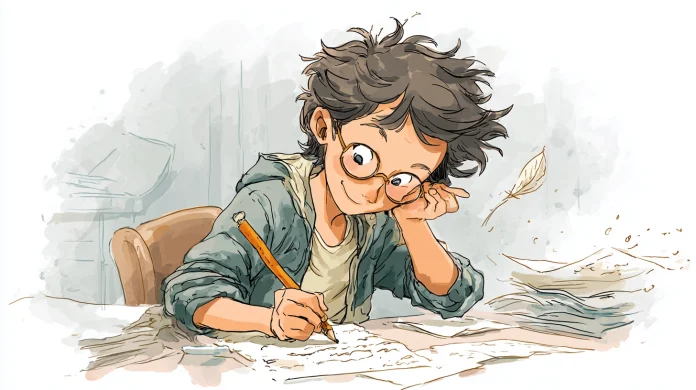Written by Malena Sanchez Moccero
Medically reviewed by Paula Alvarez (Psychologist, Dance-Movement Therapist, Emotional Intelligence Specialist & Applied Neuroscience in the Educational Field Specialist)
How can we nurture a love for learning in children? What role do parents and family play in this process? This article explores the importance of family influence, key techniques to foster learning, and practical tips to develop different types of intelligence in children.
Learning is a complex process influenced by numerous factors, from individual motivation to the family and social environment. According to research in pedagogy, psychology, and neuroscience, children learn best when they are motivated and immersed in an environment that supports the development of both cognitive and emotional skills.
Several studies highlight the critical role of early childhood experiences, showing that exposure to enriching stimuli significantly favors brain and cognitive development in young children.
Family influence is fundamental to children’s learning. Not only parents but also grandparents, siblings, and other caregivers contribute to shaping habits and attitudes toward knowledge. A home that fosters reading, play, and exploration becomes an ideal environment to stimulate children’s natural curiosity. As Melina Furman, biologist and education specialist, states, “Education is built at home,” underscoring the essential role of parents in cultivating a lifelong love of learning.
“Children’s curious questions are a unique starting point for fostering deep learning,” Furman explains in her book Guía para criar hijos curiosos (A Guide to Raising Curious Children, in Spanish), where she encourages families to embrace these questions as opportunities to explore, investigate, and learn together.
Strategies to Stimulate Curiosity and a Love of Learning
1. Ask Questions to Encourage Critical Thinking
Before answering a child’s question, take a moment to ask what they think about the topic. You can also explore what sparked their curiosity—what they saw, heard, or experienced that led them to wonder about it. This approach strengthens their critical thinking and encourages them to reflect, rather than simply receiving quick answers.
2. Foster a Love for Reading
Reading is one of the most powerful tools for cognitive development. Offering a wide variety of books and promoting joint reading sessions helps make reading a shared and meaningful activity. Creating dedicated spaces for reading—whether it’s family reading time where everyone reads their own book or simply children observing adults reading—helps nurture a love of books from an early age.
3. Create Opportunities for Hands-On Exploration
Toys that stimulate imagination, such as building blocks or puzzles, enhance spatial and logical skills. Additionally, everyday activities like cooking together or engaging in arts and crafts strengthen creativity, autonomy, and problem-solving abilities.
4. Engage in Fun STEM Activities at Home
Science, technology, engineering, and mathematics (STEM) activities help children develop analytical and problem-solving skills. Experimenting with simple scientific projects at home can be an excellent way to spark curiosity.
For example, the National PTA offers a range of hands-on STEM activities designed for families to enjoy together, making STEM learning an engaging and collaborative experience.
5. Encourage Free and Creative Play
Play is a fundamental tool through which children build their identity and connect with the world around them. In free and creative play, it’s the child—not the adult—who leads the way. By inventing and directing their own games, children naturally explore their imagination, express emotions, and develop resilience and problem-solving skills. Activities like role-playing, building, and creating art provide rich environments for learning, self-discovery, and bonding.
6. Surround Children with Diversity
Exposing children to different cultures, languages, and experiences broadens their worldview and enriches their learning. This can be fostered through storytelling, music, strategy games, or family activities that encourage exploration and curiosity about the world.
How to Develop Different Types of Intelligence at Home
The theory of multiple intelligences suggests that intelligence is not a single, fixed ability, but rather a combination of various types, such as linguistic, logical-mathematical, musical, and spatial intelligence. Introduced by Howard Gardner in his 1983 book Frames of Mind: The Theory of Multiple Intelligences, this concept has become a cornerstone in modern education, inspiring diverse teaching methods that nurture students’ individual strengths.
Recognizing that each child has unique talents and ways of learning allows families to support well-rounded development at home. Some strategies to stimulate different types of intelligence include:
- Logical-mathematical intelligence: Solving everyday calculations together, playing games like Monopoly, or posing fun mathematical challenges.
- Verbal-linguistic intelligence: Inventing stories, writing letters, creating rhymes, or enjoying storytelling sessions together.
- Musical intelligence: Listening to and analyzing different types of music, identifying instruments, or organizing small musical performances at home.
- Bodily-kinesthetic intelligence: Dancing, choreographing routines, practicing sports, or playing movement-based games like charades.
- Visual-spatial intelligence: Building with blocks, modeling with clay, or sketching objects found in nature.
- Naturalistic intelligence: Exploring nature in parks, collecting leaves, observing insects, or starting a simple garden.
- Interpersonal and intrapersonal intelligence: Encouraging open dialogue, fostering expression of thoughts and feelings, and working in teams with different roles during family activities.
The Importance of Strengthening Executive Functions in Children
The development of executive functions—such as self-control, cognitive flexibility, and concentration—is critical for academic, professional, and lifelong success. According to the American Psychological Association, these skills play an essential role in both learning and overall well-being.
Various activities can help strengthen executive functions, including practicing yoga, martial arts, meditation, and playing strategy-based games. The key is offering regular opportunities for practice, gradually increasing the level of challenge to help children build these skills over time.
Final Thoughts
Learning is not confined to the classroom; it’s a continuous process that thrives at home with the support of parents and caregivers. By creating a rich environment filled with stimulating experiences, fostering curiosity, and encouraging the development of multiple intelligences, families can help children build essential skills for the future. Through these strategies, learning becomes a meaningful, joyful journey for the entire family.





